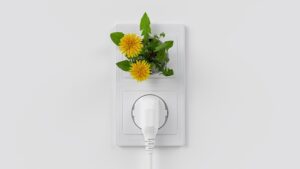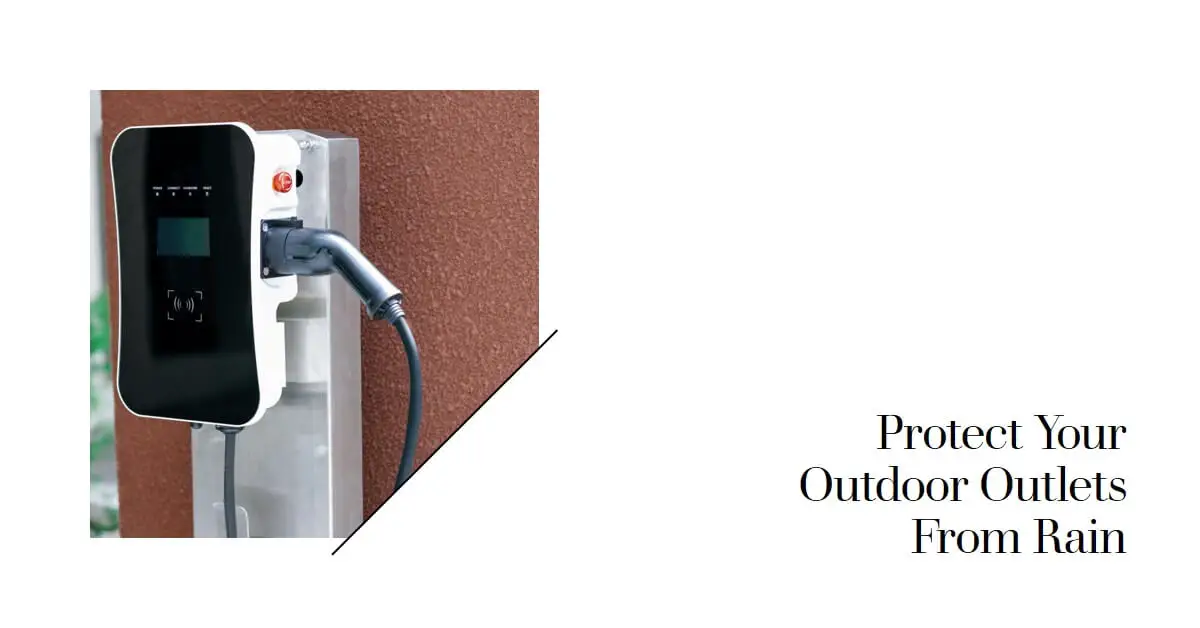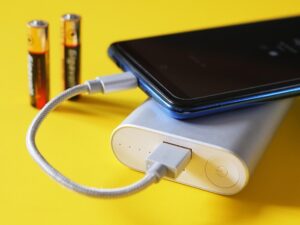Image: “Article Feature Image” by Bing, Source: [Bing Graphic Art].
Outdoor outlets are a convenient feature for powering various electrical devices in your yard or garden. However, when exposed to rain, these outlets can pose potential risks.
It is crucial to take the necessary steps to protect them from moisture to ensure electrical safety and prevent accidents.
To protect your outdoor outlets from rain, you should install weather-resistant outlet covers, consider using Ground Fault Circuit Interrupters (GFCIs), and explore elevated mounting options such as outdoor outlet boxes or wall-mounted enclosures.
In this article, we will explore practical methods and precautions that regular homeowners can take to safeguard their outdoor outlets from rain.
Understanding Outdoor Outlets
Outdoor outlets come in different types, designed specifically for exterior use. These outlets are built to withstand various weather conditions, but they still require proper protection. Understanding the basics of outdoor outlets and electrical safety is essential for homeowners.
Weatherproofing Outdoor Outlets
One effective method to safeguard your outdoor outlets from rain is by installing weather-resistant outlet covers.
These covers are designed to shield the outlets from moisture and prevent water from seeping inside, reducing the risk of electrical shock.
There are different types of weatherproof outlet covers available, made from materials such as plastic or metal.
Choose covers that are specifically designed for outdoor use and ensure they fit securely over the outlets.
Installing weatherproof outlet covers is a relatively straightforward process. You will need a few tools and materials, such as a screwdriver and weatherproof gaskets. Follow these steps to install the covers properly:
- Turn off the power to the outdoor outlets from the main circuit breaker.
- Remove the existing outlet cover using a screwdriver.
- Clean the outlet and inspect for any signs of damage or wear.
- Attach the weatherproof gasket to the outlet cover.
- Align the cover with the outlet and fasten it securely using screws.
- Ensure the cover fits tightly and seals the outlet completely.
Read also my article: The Mysterious Phenomenon: Outlets Powered Even with Breakers Off.
GFCI Protection for Outdoor Outlets
Another crucial safety measure is installing Ground Fault Circuit Interrupters (GFCIs) for outdoor outlets.
GFCIs are designed to quickly detect any electrical imbalances, such as those caused by water contact, and shut off the power to prevent electrocution.
When it comes to GFCI outlets, it is important to consult a licensed electrician for installation. However, if you are comfortable with basic electrical work, you can replace existing outdoor outlets with GFCIs following these guidelines:
- Turn off the power to the outdoor outlets from the main circuit breaker.
- Remove the existing outlet cover and unscrew the outlet from the electrical box.
- Disconnect the wires from the existing outlet and remove them.
- Connect the wires to the GFCI outlet following the manufacturer’s instructions.
- Securely attach the GFCI outlet to the electrical box.
- Install a weatherproof outlet cover over the GFCI outlet.
Elevated Outlet Mounting Options

To further protect outdoor outlets from rain, consider using elevated mounting options such as outdoor outlet boxes or wall-mounted enclosures. These options provide an additional layer of protection and help prevent water infiltration.
Outdoor outlet boxes are designed to enclose the outlet and provide weather resistance. They can be mounted on various surfaces, including walls and posts. Follow the manufacturer’s instructions to properly install the outlet boxes.
Wall-mounted enclosures are another effective option. These enclosures provide secure housing for the outlet, shielding it from rain and other elements. Choose enclosures that are specifically designed for outdoor use and install them according to the provided instructions.
Additional Protective Measures
In addition to weatherproof covers and GFCIs, there are other protective measures you can take to enhance the safety of your outdoor outlets:
- Flip Lid Covers: Consider using outlet covers with flip lids. These covers allow you to keep the outlet protected while in use, preventing water from entering the outlet.
- In-Use Outlet Covers: These covers are designed to accommodate plugs while maintaining a level of protection. They feature a hinged opening that allows cords to pass through while the cover remains closed.
Maintenance and Inspection
Regular inspection and maintenance are vital to ensure the ongoing safety of your outdoor outlets. Follow these guidelines:
- Periodically inspect your outdoor outlets for signs of damage, wear, or moisture ingress. Look for cracked covers, exposed wires, or rust.
- If you notice any issues or are unsure about the condition of your outdoor outlets, contact a qualified electrician to assess and repair them.
- Clean your outdoor outlets regularly to remove dirt, debris, and any potential obstructions. Use a dry cloth or a soft brush to gently clean the outlet covers and surrounding areas.
Conclusion
Protecting your outdoor outlets from rain is crucial for electrical safety in your yard or garden. By following the methods and precautions outlined in this article, you can safeguard your outlets and minimize the risk of accidents caused by water exposure.
Remember to choose weatherproof covers, consider GFCI protection, explore elevated mounting options, and perform regular maintenance and inspections.
By taking these steps, you can enjoy the convenience of outdoor outlets while prioritizing the safety of your family and property.



